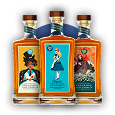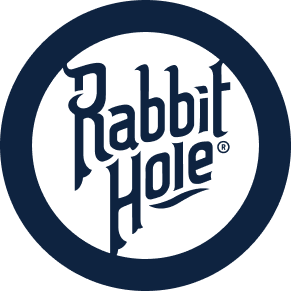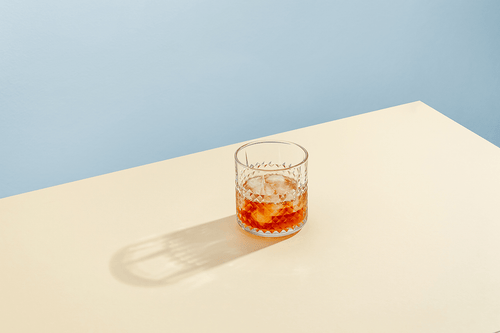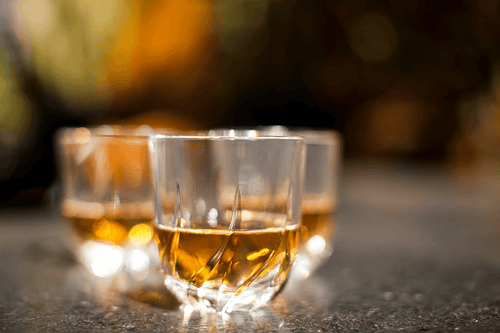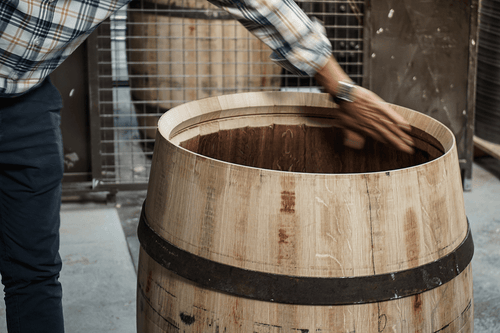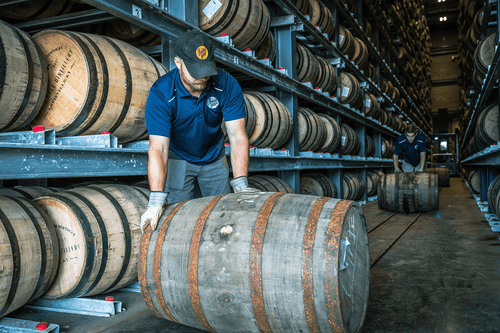Bourbon Distillation: A Brief Overview
BOURBON DISTILLATION:
A BRIEF OVERVIEW
The sweet, brown bourbon that you buy from the shelves goes through a complex production process spanned over multiple years. From processing grain mash to finally bottling the bourbon, the alcohol goes through a series of intermediary steps to refine, yield a clear texture, and maintain the consistent, signature taste for which bourbon is so well-known. The bourbon distillation process is a major step in its manufacturing process that imparts color, texture, and flavor...

What Is Distillation?
Bourbon distillation is the process of purifying the bourbon by heating and vaporizing it. The vapor, once condensed, is collected to obtain a purer and more concentrated alcoholic substance. Most distillers put bourbon through distillation twice. In the first step, the bourbon goes through column stills. The second round distills it through attached, heated copper pot stills. These bourbon distillation rounds boost the alcohol content of the liquid and remove the mash and other impurities.
The Distillation Law
The U.S federal law states that bourbon distillation can reach a maximum of 160 proof, or 80% alcohol by volume (ABV). The proof limits help maintain the bourbon's color intensity and congener concentration, and these factors reflect in the ethereal taste of bourbon.
If the bourbon distillation takes place at a higher proof, the final yield can be more per batch, but its flavor is stripped away in the process. It becomes a neutral grain spirit with no particular taste of its own.
The distilled bourbon must not enter barrels at above 125 proof. Bourbon increases in the proof as it ages. Most distilleries choose to barrel at a lower proof than 125.
The extra water in the bourbon helps regulate the over-woody flavor, astringency, dryness, and bitterness caused by the oaked barrels in the aging process. The wood polyphenolic compounds, known as tannins or wood sugars, are water-soluble. Once they dissolve in the water, they oxidize, creating a smoother bourbon.
The taste profile of bourbon is influenced by many factors: grain mash, water, yeast, distillation style, and proof. However, the final taste of bottled bourbon varies depending on the barrel's char level, overall aging conditions like warehouse location, maturation time, and bottle proof. The bourbon attains it's sweet taste imparted by the grain mash coupled with the deep flavor and caramel color after barrel-aging.
The Bourbon Distillation Process
Setup
After three days in the fermenter, the bourbon mixture is ready for distillation. From the fermenter, the liquid is moved into the source of flavor. Most distilleries use column stills in the first round of bourbon distillation. The column stills were invented in 1826 by Robert Stein of Haig & Co. in Scotland. The significant advantage of column stills is that their pillar-shaped structure makes continuous distillation possible as long as the fermented mash supply continues.
A vertical pipe with a height of 5-20 meters and a diameter of 70-150 centimeters is set up. Perforated plates with holes are inserted into the pipe. These floors ensure a connection from the bottom up to the top of the column. The holes of these floors are curved upwards so that no liquid is passed onto the bottom floor through the holes. Small tubes are inserted so that the liquid accumulating on the floors can flow downward to the next floor.
First Round of Distillation
The column is piped with the fermented mash on the top and heated from the lower end. The distiller's beer washes down over the plates. Owing to its lower boiling point, it vaporizes and goes to the top at the right temperature. The column's temperature is set so that the gaseous alcohol collects at the top at 78-85 degrees Celsius (172-185 degrees Fahrenheit) while the remnants accumulate at the bottom at 94.4-100 C (202-212 F). The mash and water settle at the bottom of the columns. The liquid beer flows down through the floor tubes, and the gaseous alcohol flows upwards through the holes.
The rising alcohol vapor is condensed, ending in the first tail box. The condensed vapor is a little grungy here due to the copper sulfate from the malt and corn oil. The blend extracted after the first bourbon distillation cycle is usually termed low wine.
The distilled alcohol is extracted at the top of the column still. The water that constitutes fibers and grain mash accumulate at the bottom. This product is called "stillage." It is processed into animal feed, and the sour mash is reintroduced into the fermentation process.
In small column stills, the alcohol content of approximately 60% ABV (120 American proof) can be obtained at the top. If the columns are taller, the alcohol content can be raised to 80% ABV.
Round Two of Distillation
Once extracted from the still, the alcohol steam passes through a copper pot. This copper pot is a doubler where catalytic conversion takes place continuously, which improves the taste of the bourbon. When the column floors are not made of copper, doublers come into the picture. In column stills that do not have copper elements, the distillate must run through a copper doubler for the second round of fermentation.
The low wine or the distillate from the first round is re-distilled to remove more impurities and water. After the second round of distillation, the vapor enters a condenser and is liquefied again. The distilled alcohol is strong at 130 proof, and it's clear and colorless at this stage. It is termed as high wine or the white dog.
After this twofold bourbon distillation process, the alcohol is appropriately diluted and tested for flavors, concentration, and purity standards. It is then filled in new oak barrels that are charred on purpose.
About 35.24 liters of grain produce about 9.5 liters of pure alcohol. That means one ton of grain can give almost 400 to 450 liters of bourbon. For this bourbon to be of the top-notch quality that abides the production laws, bourbon distillation is one of the most important processes which imparts such distinctive flavor to the much-beloved spirit.














